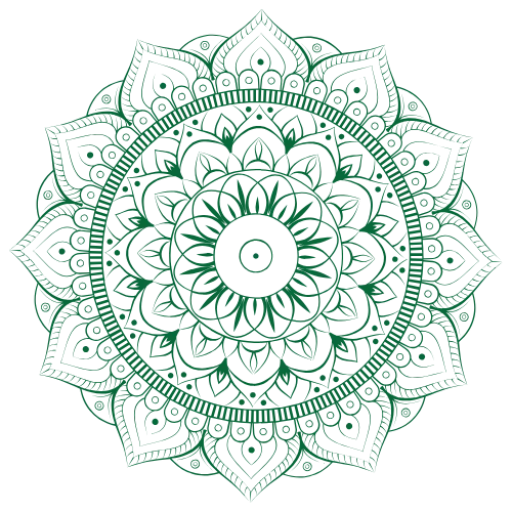The following series of articles, an in-depth look at Yoga has been compiled by Merel Martens founder of Parimukti Yoga and produced and packaged by Avdhoot Limaye for Parimukti.com. In Part 7 we will examine the Deeper nuances of Pranayama practice.
Pranayama Practice
Practicing Pranayama generates a store of energy in the body. The breath is very subtle and much care has to be taken when practicing. Some schools of Yoga (Iyengar Yoga in particular) only teach Pranayama to advanced students. Anyone can do some type of Pranayma,
(IMPORTANT WARNING)
but care should be taken to start slowly and not rush on to more difficult practices until one is ready. Your lungs, heart and nerves gain addes strength through the practices, however if you overdo it you might cause damage instead.
There should be no violent respirations, no extended kumbhaka beyond a comfortable measure, no forcing of the breath, body or mind. Do not attempt to accomplish an advanced Pranayama beyond your present capabilities.
Before starting observe the following:
Asana: a proper sitting posture with an erect spine is necessary. If this is impossible one may start with lying down.
Place: practice in a well ventilated clean and pleasant room. Avoid practicing in the wind or sun (early morning sun is ok)
Cleanliness: personal cleanliness is important. Ritual cleansing also helps to clean the mind
Time: early in the morning is best. Brahmamuhurtha (two to three hours before sunrise) is considered best for any spiritual sadhana, as the vibrations of the atmosphere are in their purest and the body is fresh and the mind has very few impressions. Otherwise after sunset
Sequence: After asanas and before meditation practice
Body condition: empty bladder and bowels. The stomach should be empty before practicing
Viloma Pranayama (reverse breath)
An easy method of extending the duratio of inhalation and exhalation is through Viloma Pranayama. In this practice, the breathing is interrupted by several pauses throughout inhalation, or exhalation, or both. It serves to give even finer control over the flow of air, and is an excellent practice in preparing for extended breathing duration and retention. It may also be used as an alternate breathing method in Nadi Shodhana and is a good preparation for Bhastrika
There are three techniques: interruption of inhalation, interruption exhalation, interruption of inhalation and exhalation. Here only the latter will be described but is is advisable to practice the first two and slowly progress to interrupting both inhalation and exhalation.
- Take a few normal breaths, finishing with an exhalation.
- Inhale, pause, continue the inhalation, then pause again. Continue this way until the lungs feel completely full. Make sure the diaphragm and abdomen remain firm after each pause. There should be no feeling of the abdomen jurking up and down
- After a full interrupted inhalation, exhale, pause, continue, exhale, pause, and continue until the lungs are completely empty.
- Practise eleven rounds and breathe normally for a few minutes after you have finished
The number of pauses in any inhalation or exhalation will normally be from three to five, but variation on the three techniques may be devised by either increasing or decreasing the number of pauses. More subtle control of the breath can be obtained by increasing the number of pauses. Increasing the force of the breath can also be done. Short forceful pulses will prepare the lungs and musculature for practices such as Bhastrika and Kapalbhati.
Kumbhaka
Kumbha means an earthen pot. Like a pot, the rib cage must be full or empty. There is an almost imperceptible pause at the end of ordinary inhalation and exhalation. In Pranayama this is accentuated and prolonged. Breath and its motion are suspended.
There are two types of kumbhaka: antara kumbhaka and bahya kumbhaka. Antara kumbhaka is retention of breath after inhalation. It distributes energy in the form of breath. Bahya kumbhaka is the pause after exhalation. It is not generally practiced on its own. There is actually a third type of kumbhaka: kevala kumbhaka wich is spontaneous retention. This occurs when the breath automatically ceases, no effort being applied and it is said that this can occur in states of Dhyana or Samadhi
The following techniques and ratios are prescribed.
The ratios stand for (inhale: antara kumbhaka: exhale: bahya kumbhaka)
Technique 1: Inhale, Internal retetention, Exhale (1:1:1)
Technique 2: Inhale, internal retention, extended exhalation (1:1:2) and (1:2:2)
Technique 3: Inhale, internal retention, exhale, external retention (1:1:1:1) going up to (4:4:4:4)
Technique 4: Inhale, extended internal retention, extended exhalation, extended external retention
Starting with (4:4:8:4) going to (4:16:8:8) and very advanced work up till (6:24:12:12)
Nadi Shodhana (psychich network purification)
Nadi Shodhana is a singularly important pranayam. Nadi means energy channel, shodhana means ‘to cleanse’ or ‘to purify’. It is practiced by alternating the inhalation and exhalation between the left and right nostrils, influencing the ida/pingala nadis, the controlling oscillations of the body/mind network and bringing balance and harmony throughout the system. Nadi Shodhana can be practiced as a beginner, intermediate and advanced practitioner, seek advice before commencing any of the levels.
Nasikagra mudra: the breath through the nostrils is controlled by the fingers of the right hand, which are held in front of the face. The index and middle finger are placed in between the eye brows (Ajna chakra) and the thumb and ring finger press against the nostrils to open/close the nostril.
Round: One round of nadi shodhana comprises breathing in through the left nostril, out through the right, in through the right nostril, and out through the left. Practice soundless breathing. Jalandhara, Uddiyana and Moola bandha are used during the intermediate and advanced stages.
The practice of Pranayama will be continued in the next part……
Address: Parimukti Yoga Center, Kanira Homes,
Girkarwaddo, End of Magic Park Road,
Arambol, 403524,
Goa, India
Phone: +919637521278
Email: info@parimukti.com
Website: https://parimukti.com/
Yin Yoga Training Goa | 200 Hour Yoga Teacher Training Goa | Meditation Teacher Training Goa



1 thought on “What Is Yoga ? Part 7”
Comments are closed.